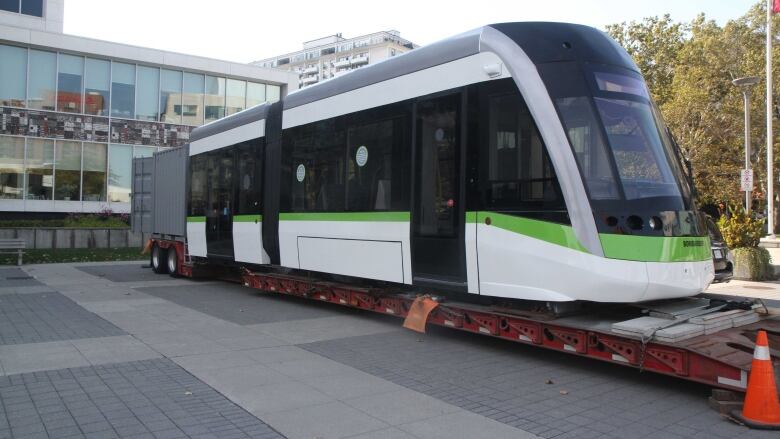Metrolinx will control LRT - including the cost, agreement says
Councillors will talk about the timeline on Jan. 25

The city can give input on most of the components for Hamilton's future light-rail transit (LRT) line, but for the most part, Metrolinx will be in charge.
That's according to a new memorandum of agreement city councillors will vote on next week. The agreement between Metrolinx and the city of Hamilton specifies that while the city can give input on major components of the project, Metrolinx will have the final say.
"The city will have the opportunity to review and provide input and Metrolinx will use reasonable efforts to implement Hamilton's suggestions," staff said in a report. That report will be discussed at an LRT subcommittee meeting on Jan. 25.
But ultimately, Metrolinx "will have final determination on these matters."
"These matters" means major design, real estate acquisitions, utility lines, permits, licensingand other elements of the project beyond certain infrastructure decisions along King Street.
Metrolinx contractors will build a $1-billion LRT line along King Street from McMaster University to the Queenston traffic circle. It will also build a line along James Street North from King Street to the West Harbour GO station, or the waterfront if budget permits.
The agreement specifies that Metrolinx owns the project and controls its scope, budget, scheduling, planning, design and construction.
It also says that Metrolinx will pay for the project, including any infrastructure such as watermains that need to be relocated because of LRT.
Here are some other highlights:
- The project will be designed, built and owned by Metrolinx and operated by or on behalf of Metrolinx. Metrolinx will either own the land or have real property interests.
- LRT riders can use PRESTO cards.
- The city won't have to pay to relocate any infrastructure (sewers, watermains, etc.) that has to be moved because of LRT.
- If any of the city's relocated infrastructure has to be repaired, the city will reimburse Metrolinx for the cost.
- The city will implement "transit-supportive land use policies."
- Metrolinx will keep in mind that Hamilton has "unique knowledge of local conditions" and will get its input on project details.
- The city can "review and comment" through Metrolinx on the design of the project and its infrastructure.
This agreement is just the first phase. There will be more detailed agreements this year that hammer out the design, build, operation and maintenance of the line.
The city will have approval rights over some assets it owns, such as sewers and watermains, that have to be rebuilt or replaced during the project, the report said.
The LRT line is due to be operational in 2024. Construction should start in 2018, although some councillors want it to happen as soon as possible to avoid political interference.
Councillors will talk about the timeline on Jan. 25.












_(720p).jpg)


 OFFICIAL HD MUSIC VIDEO.jpg)
.jpg)



























































































